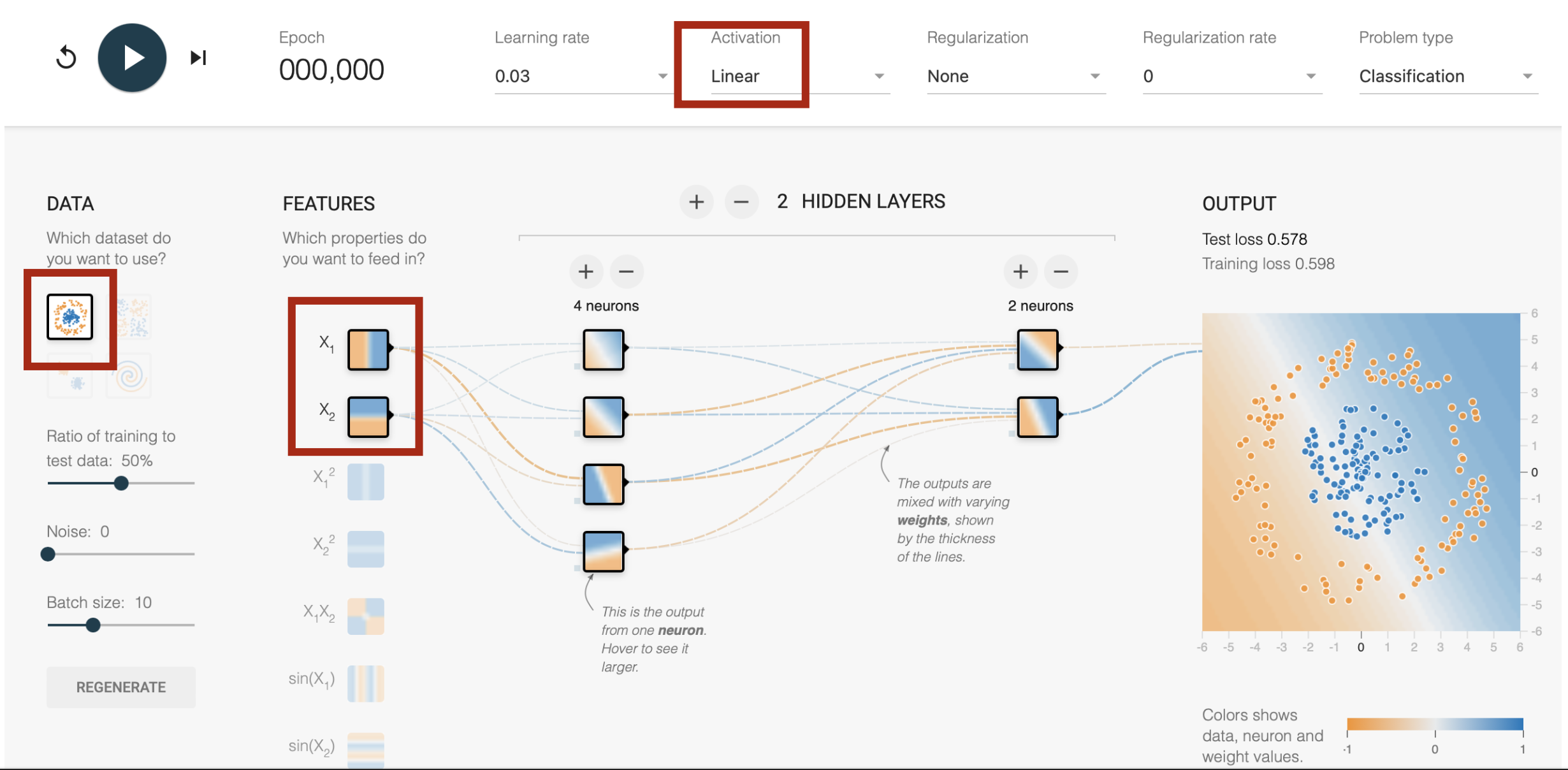- https://historyofcomputers.eu/timelines/history-of-computers-a-brief-timeline/
- Perceptron: https://en.wikipedia.org/wiki/Perceptron
- Explainer: https://mlu-explain.github.io/
- A path: http://www.tml.hut.fi/Research/DIVA/past/
- Try out: https://docs.edgeimpulse.com/workshops
- https://playground.tensorflow.org/
- Tinker with the defalult example: What are features, learning rate, activation functions?
- Challenge: Can you create a neural network that only uses the first 2 features as input, and linear as the activation function?

- Exit: Check around tensorflow @ https://www.tensorflow.org/ (Main tool for Magenta)
- Explore https://magenta.tensorflow.org/get-started
- Find NSynth Explorer at the Web Applications: https://magenta.tensorflow.org/demos/web/ , try it out
- Main: https://magenta.tensorflow.org/nsynth
- Check https://magenta.tensorflow.org/nsynth-instrument If you have Ableton Live or Max/MSP, download the plugin, experiment with the grid. If not, try other web apps.
- Download Magenta Studio https://magenta.tensorflow.org/studio (If you have Ableton Live, the plugin version, if not the standalone)
- Make sure to experiment with all 5 tools: Continue, Groove, Generate, Drumify, and Interpolate.
- Magenta's DDSP: https://magenta.tensorflow.org/ddsp-vst
- DDSP models by its authors: https://drive.google.com/drive/folders/1o00rBOLPNEZWURCimK_QQWpvR8iWVeK5
- RAVE: https://forum.ircam.fr/search/?topics=RAVE
- DDSP + TikTok-like morphing: https://mawf.io/
- FluComa https://learn.flucoma.org/
- 🔥 Neutone: https://neutone.ai/ (Watch the video below for an introduction, or visit the dedicated page.
- Google Music LM: https://google-research.github.io/seanet/musiclm/examples/
- Meta AudioCraft: https://audiocraft.metademolab.com/
- Web UI for LLMs https://sonauto.ai
- 🔥 https://fugatto.github.io/
🚀 Juan Alonso Moreno has developed a differentiable FM synthesizer using the DDSP framework in his 2021 SMC Master thesis
Franco Caspe, a PhD student from QMUL has interesting related projects. There is a new book and repo by Yee-King you can use to combine the power of deep learning and the real-time capabilities of the JUCE platform.
💿 DATA: Miller S Puckette in his Pd Repertory Project provides example study patches of important electronic / computer music projects. Stefano Fasciani (U. Oslo) is actively working on a dataset generator for musical devices.
Starting from these models 🚀 and data 💿, can you design and evaluate an end-to-end differentiable synthesizer?
Denmark has a rich history of innovation in Quantum research, and aims to a big player in Quantum Computing. There is a growing community, a national strategy, talent programs, and resources available for the next generation of Quantum Computing and Quantum Machine Learning professionals. Outside of Denmark, startups like Moth Quantum strive to enable the next era of music, gaming and the arts with quantum computing technology.
Objective: Explore the intersection of quantum and creative computing in sound and music, focusing on the development of new musical instruments and compositions.
- Main: https://aiva.ai/
- Release discord: https://discord.com/channels/595651381860368384/596767903215255572
- Tutorial list @ YouTube https://www.youtube.com/watch?v=SR-UWkSTmAQ&list=PLv7BOfa4CxsHp4uDdsmZgpdclrwkdMpOe
- Check Terms and Conditions and create an account
- Generate 3 versions of a compositions on the web interface
- Open the best one in Editor and edit to improve
- Use an influence, repeat to last steps above for another composition
- Identify the Model / Data / Code structure
- Show and tell: including influence and ethics
- Download your work as MIDI (we'll use in 1.3 onwards)
- Main: https://interactiveaudiolab.github.io/project/audacity.html
- Download special build of audactiy (Mac only ???)
- Try Usage Example - Upmixing and Remixing with Source Separation with your favorite audio file
- Try adding vocals to your AIVA composition. We have to match the pitch, tempo, harmony, or other attributes with effects.





